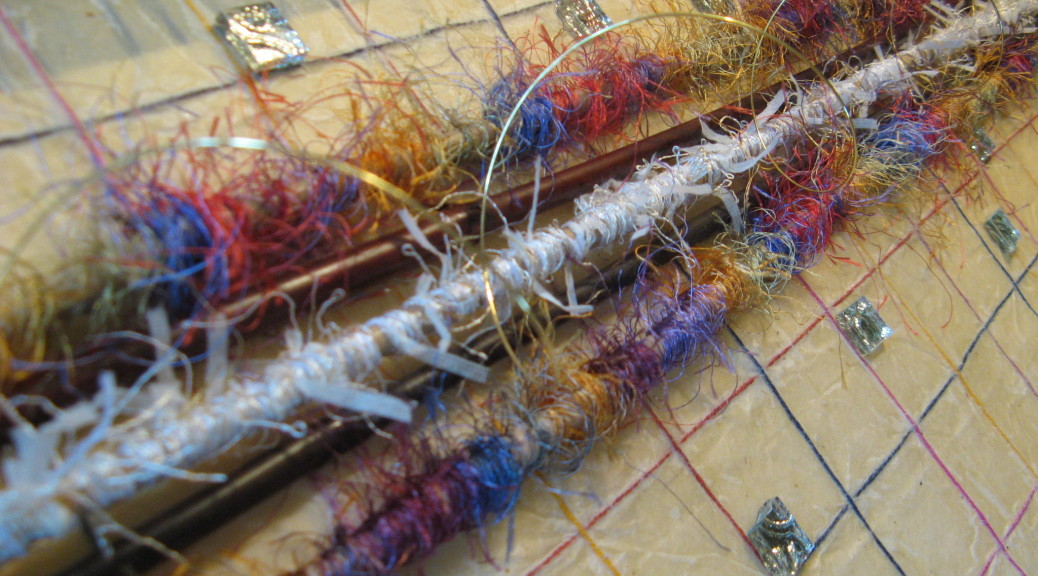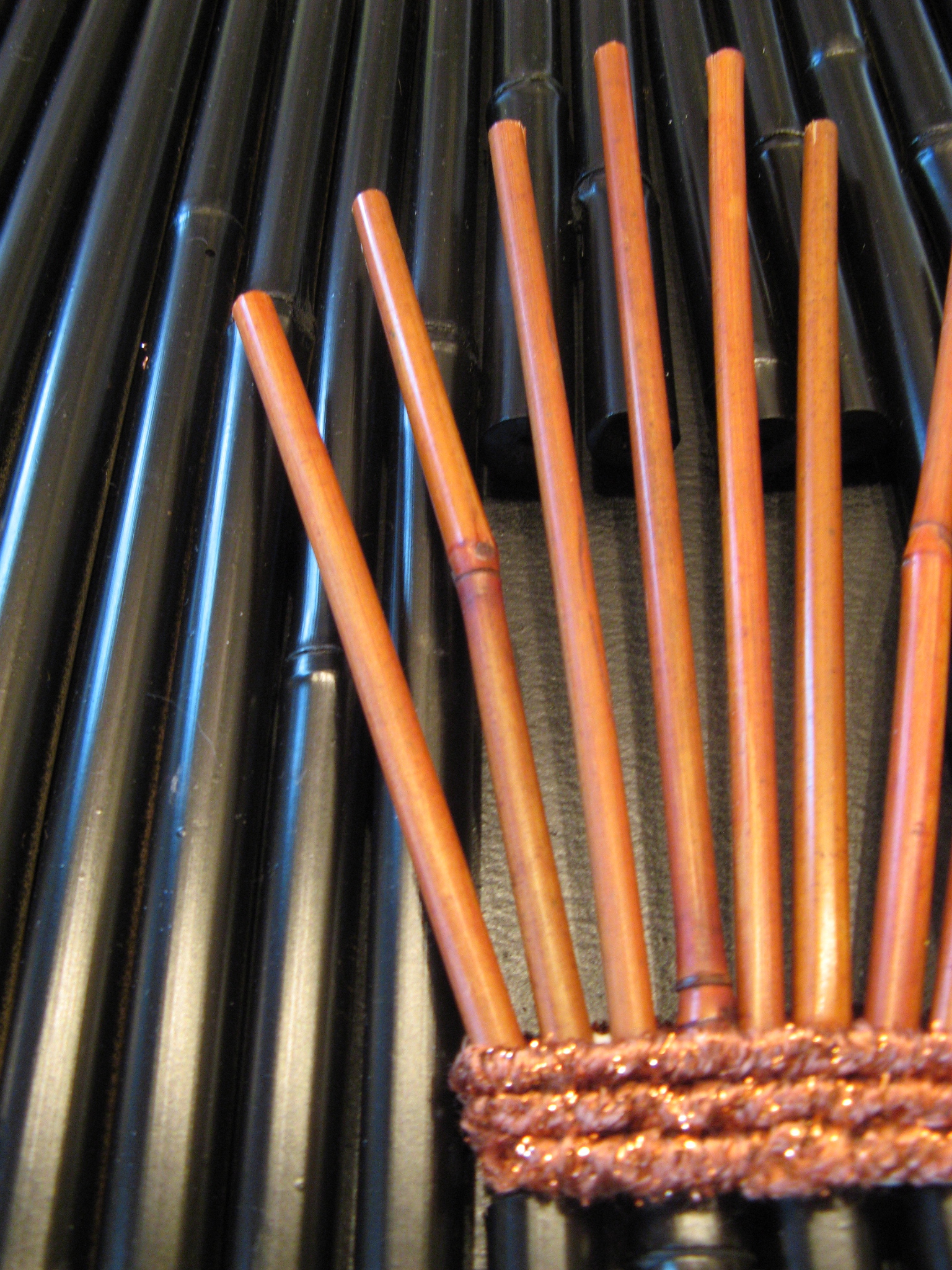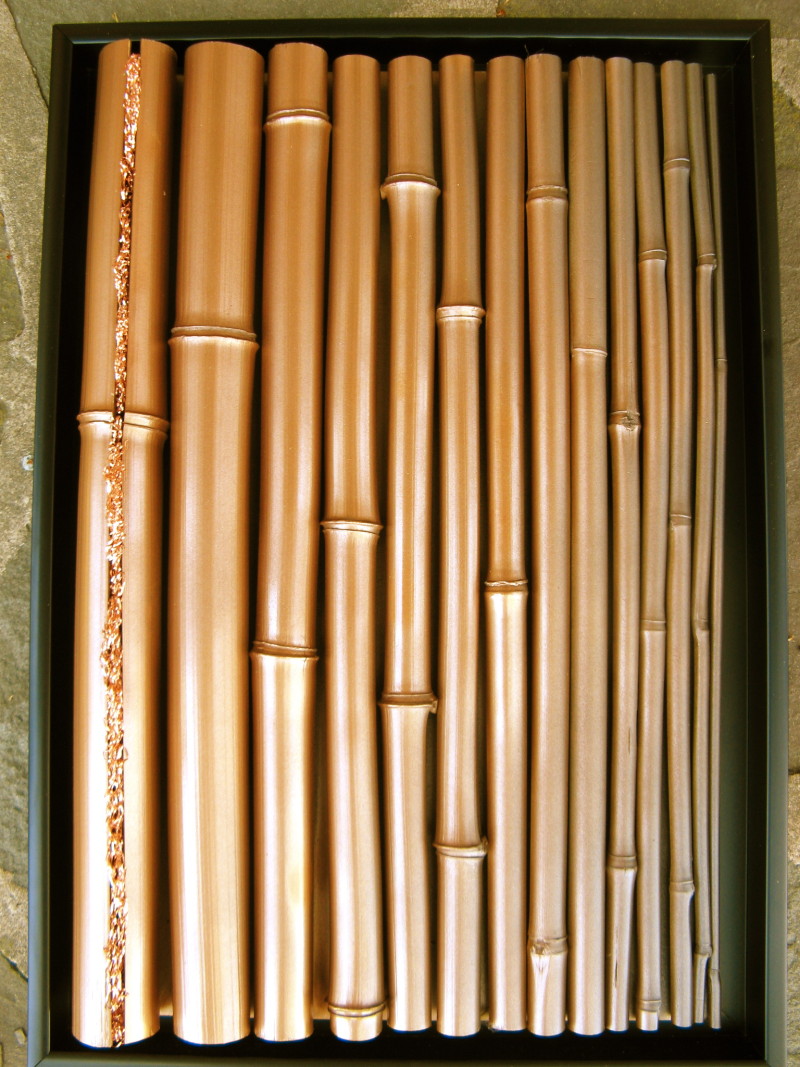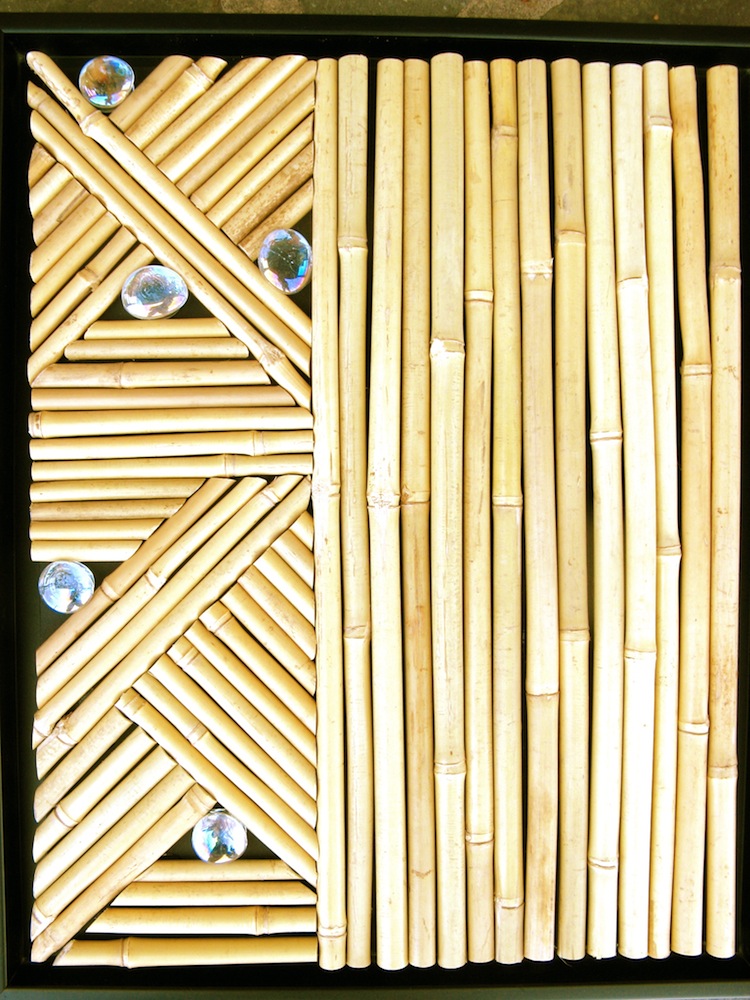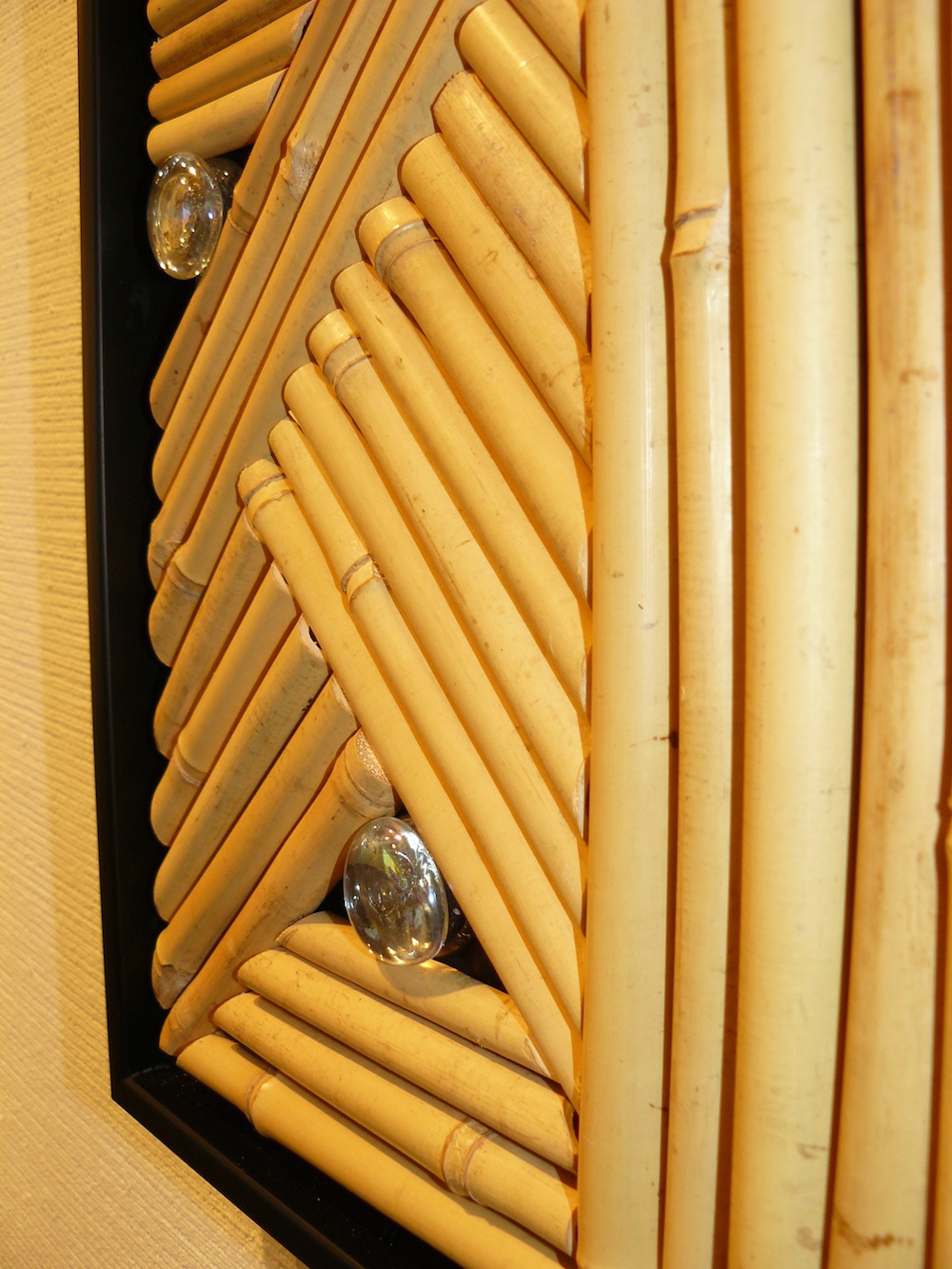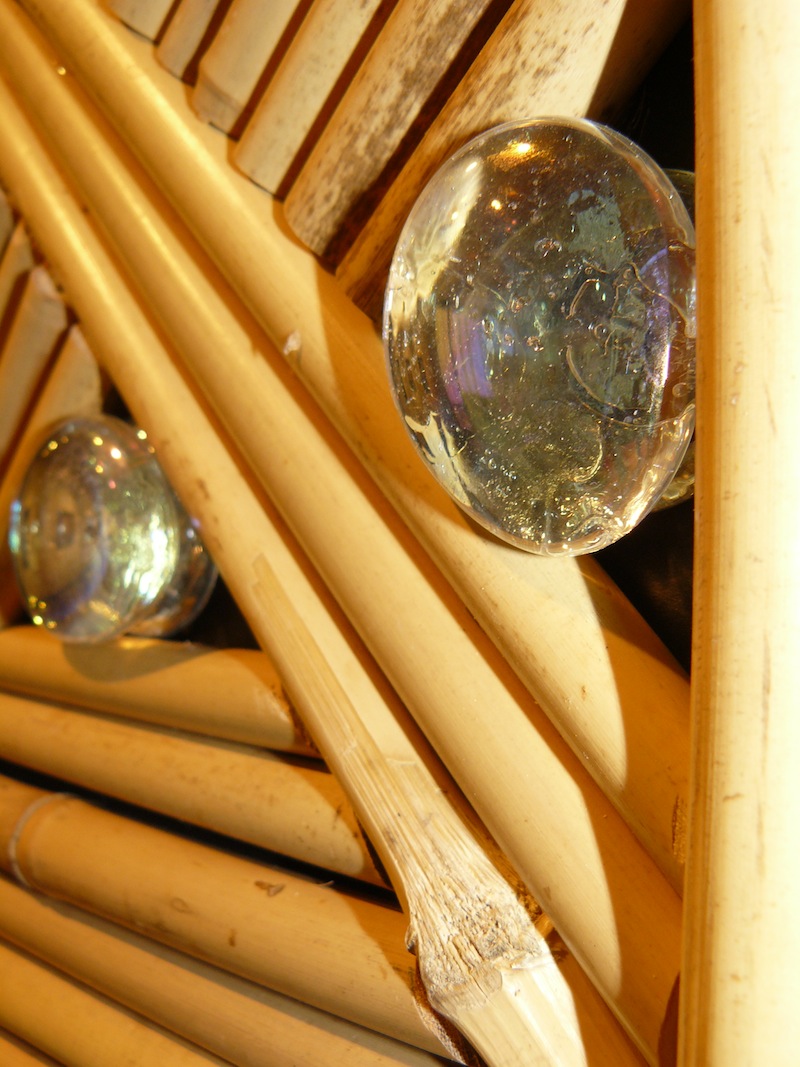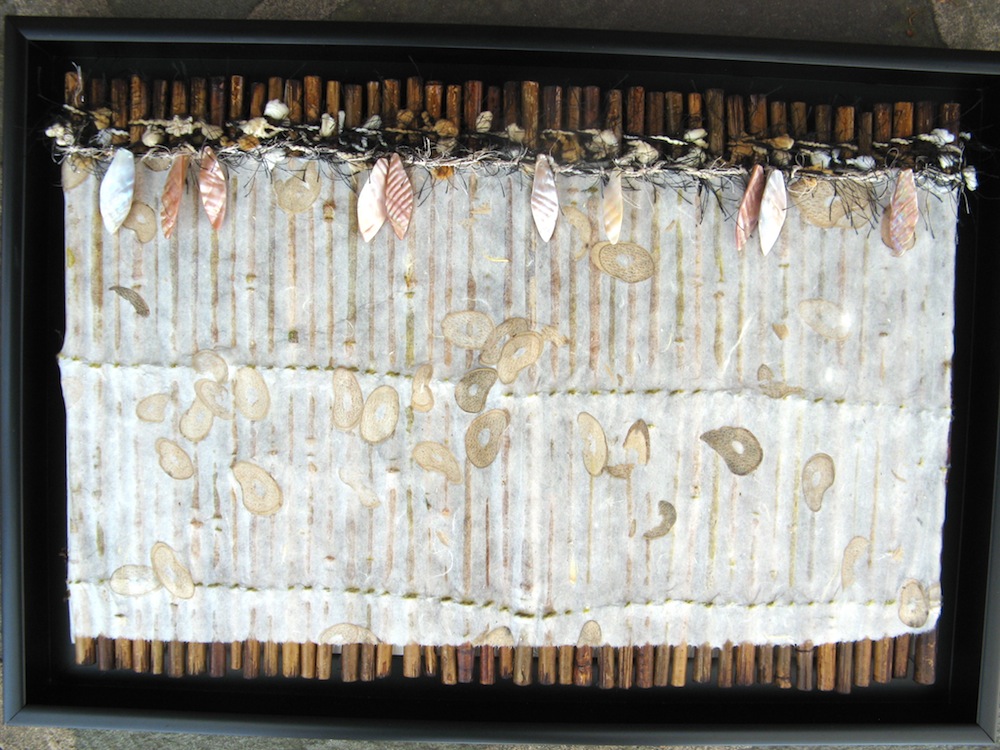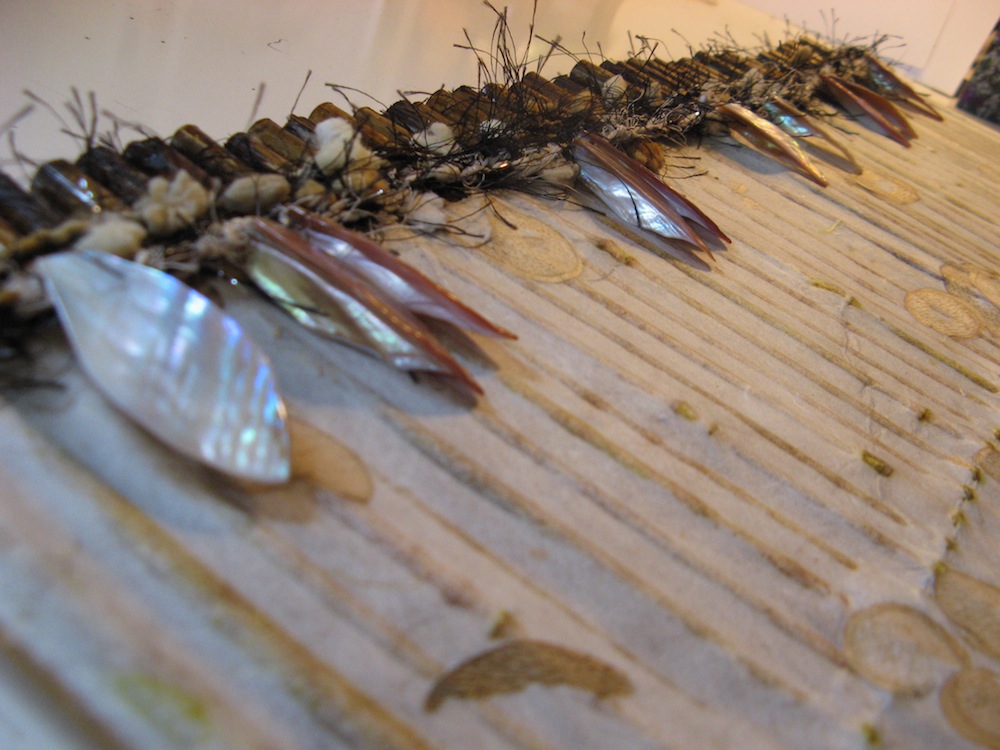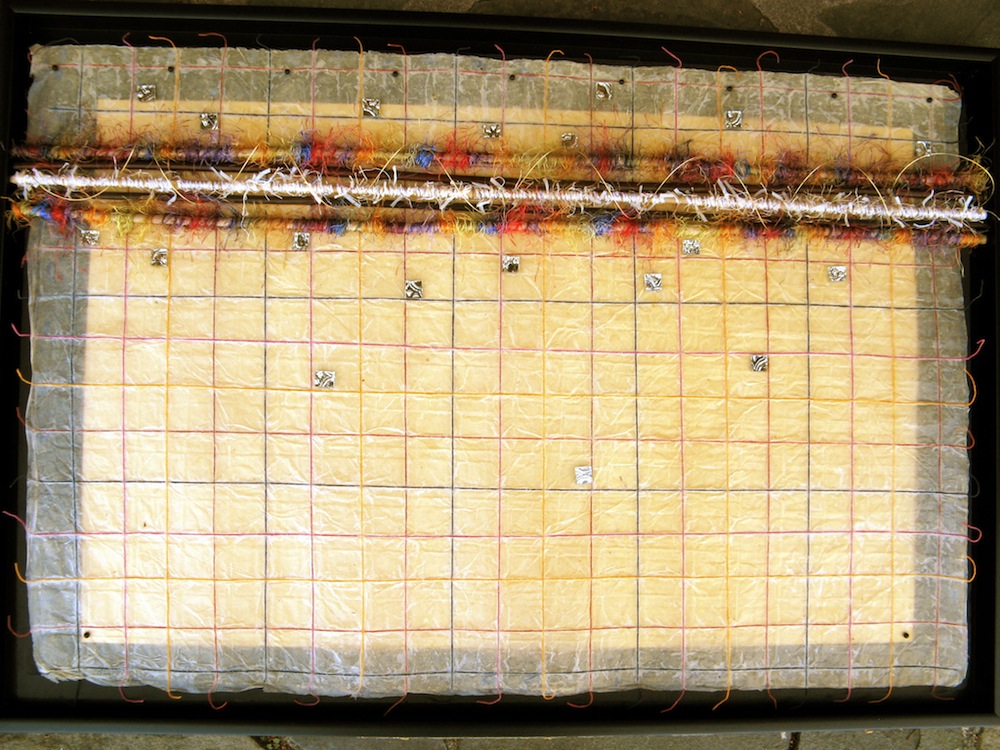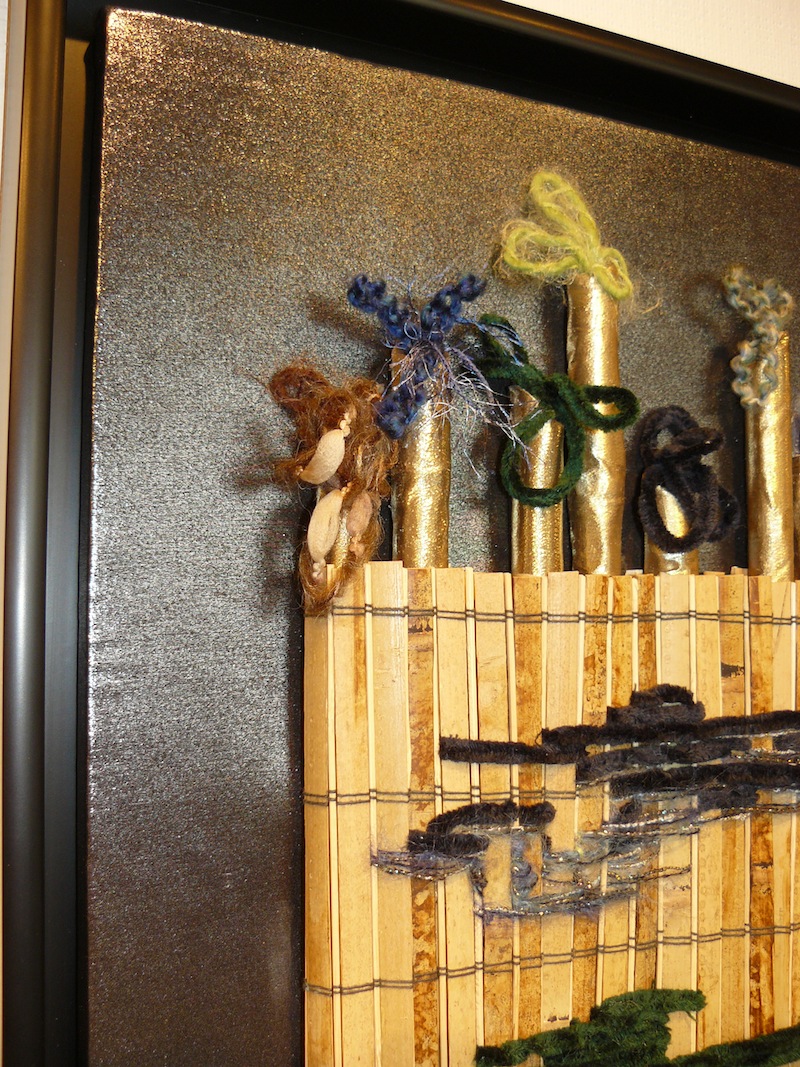2009 mixed media assemblages
In my mid-sixties, I am walking the edge between many realities—multiple world views, life and death, beauty and pain, generational systems, what is and what could be.
I am indebted to the various edgewalkers who have used this term before me—Terry Tempest Williams, Judi Neal, Linda Schele—and to all the many edgewalkers, deceased and living, who have inspired me in this spiral dynamic, inward and outward.
edgewalking 1: standing at an angle
bamboo, textile, fiber
 Grace Jantzen, feminist theologian, proposes “standing at an angle to the certainties and preoccupations of the [postmodern] world . . . [to engage] in the interrogation of modernity that has given itself to the mundane.”
Grace Jantzen, feminist theologian, proposes “standing at an angle to the certainties and preoccupations of the [postmodern] world . . . [to engage] in the interrogation of modernity that has given itself to the mundane.”
In doing so, one “enters a space—indeed to become a space—where creative responses to the deathly structures of modernity can be discerned.” (Introduction to Julian of Norwich, SPCK, 2000, pp vii, xii.)
edgewalking 2: beyond the box
bamboo, metallic fiber
Thinking outside of the box is an ancient concept. But a contemporary holistic implementation creates a new horizon for becoming human—ensuring the flourishing of all life-forms for the mutual survival of all.
“The present moment finds our society attempting to negotiate the most difficult, but at the same time most exciting, transition the human race has faced to date.” (Clare W. Graves, 1974, quoted in Spiral Dynamics: Mastering Values, Leadership, Change, Blackwell Publishing, 2000, p 13.)
edgewalking 3: becoming divine
bamboo, metal
From a site of oppositional vision, Grace Jantzen imagines how, through acts of love for the world and delight in its creative possibilities, one gradually becomes divine. (Becoming Divine: A Feminist Philosophy of Religion, Indiana University Press, 1999, pp 155, 161, 217.)
“. . . it is exactly on this threshold between visible and invisible that our most creative conflicts and challenges come alive. In our confusion, fear, and uncertainty we call upon the invisible structures of original kindness to come to our assistance . . . by refreshing and activating in us our invisible potential.” (John O’Donohue, To Bless the Space Between Us, Doubleday, 2008, p 188.)
edgewalking 4: edge effects
bamboo, glass
The ecological term, ”edge effects,” revolutionized Sara Stein’s way of gardening and caring for her acreage. She writes, “’Edge effect’ refers to the particular abundance of life and diversity of species that occur along the boundary of contrasting habitats. Rushy pond shores. Thicketed roadsides. Or—here was the knife—fields grown over but not yet grown up to merge with the woods around them.” (Noah’s Garden: Restoring the Ecology of Our Own Backyards, Houghton-Mifflin, 1993, p 9.)
In our own New Danville wetlands, we are welcoming back rich biodiversity amid “rushy pond shores.”
edgewalking 5: landlovers’ border tribe
bamboo, rice paper, fiber, shell
Terry Tempest Williams models and possesses an intense passion for the sacred landscape of her Utah Mormon geography and the vast West—a landscape she describes as inspirited by wildness and grace. Her relationship with the land is as lover, “engaged in an erotics of place. Loving the land. Honoring its mysteries.” (Williams, 1994, as quoted by Bron Taylor in Encyclopedia of Religion and Nature, p 1752.)
Challenging land-use practices, Williams says, “I must question everything, even if it means becoming a border tribe among my own people.” (Refuge: An Unnatural History of Family and Place, First Vintage Books, 1991, p 286.)
edgewalking 6: solidarity on the margins
bamboo, metal, glass, fiber, rice paper/vellum
Out of a chosen solidarity with the marginalized, an oppositional world view considers margins and centers, patterns and possibilities. (Jantzen, p 122.)
“The goal of this conversation is not simply mutual understanding or tolerance but the possibility of mutual transformation to more just, humane, and emancipatory modes of being in the world.” (Scott Holland, as quoted in Chad Martin sermon, “Rich Marginal Spaces,” 11/05/2006.)
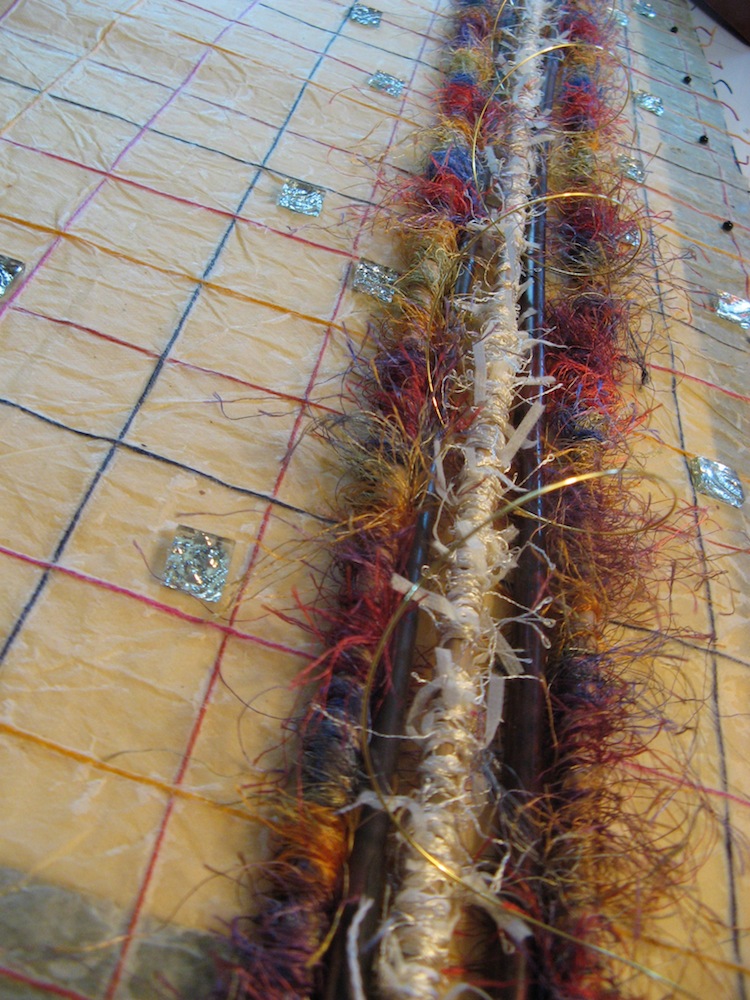
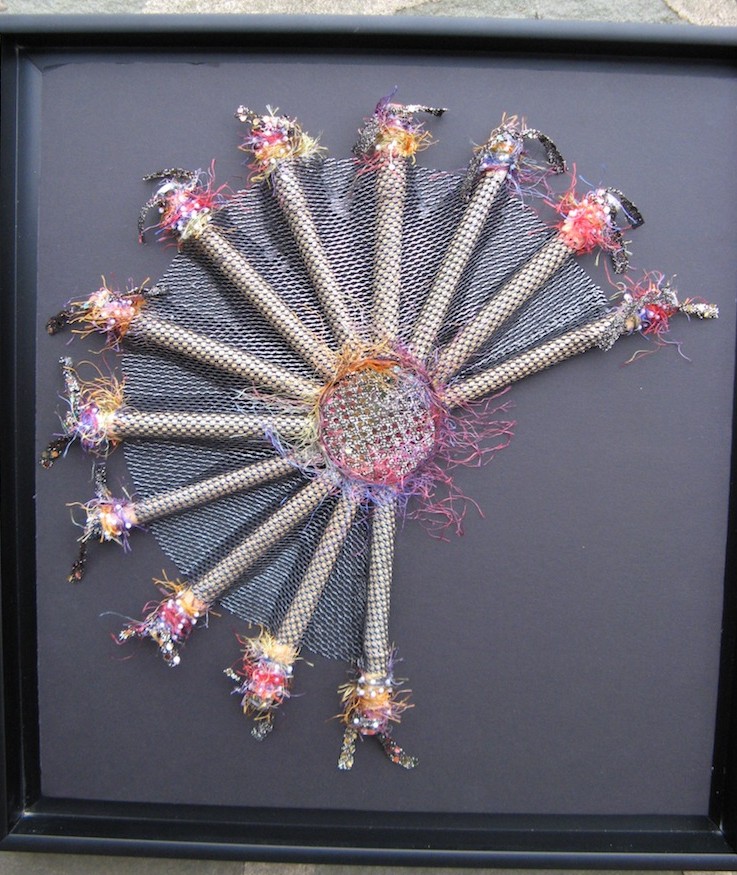 edgewalking 7: cultural creatives
edgewalking 7: cultural creatives
bamboo, fiber, beads, textile
Grounded in spiritual reawakening and playfulness, cultural creatives in growing numbers create energetic, inclusive communities. The 2000 classic by Paul Ray and Sherry Ruth Anderson, The Cultural Creatives, (Harmony Books) describes how 50 million people are changing the world.
 One cultural creative, Adrienne Rich, writes poignantly:
One cultural creative, Adrienne Rich, writes poignantly:
“My heart is moved by all I cannot save:
So much has been destroyed
I have to cast my lot with those
Who year after year, perversely,
With no extraordinary power,
Reconstitute the world.”
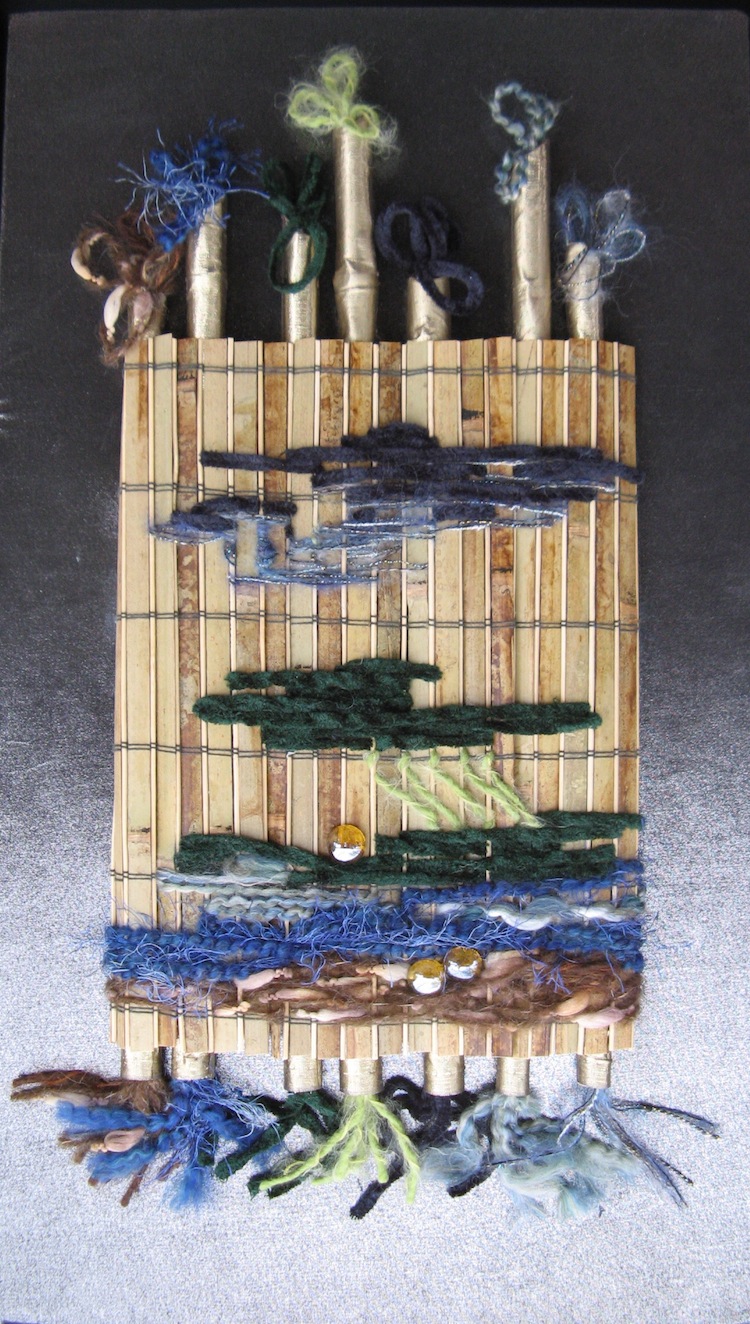 edgewalking 8: alive and at home in this world
edgewalking 8: alive and at home in this world
bamboo, fiber, textile, glass
Being rooted and immersed in the natural world secures ultimate healing, for individuals as well as systems.
Poet Mary Oliver confesses, “My work is loving the world . . . let me keep my mind on what matters, which is my work, which is mostly standing still and learning to be astonished.” (“Messenger” from Thirst, Beacon Press, 2006, p 1)
“I’m still discovering right up to this moment, that it is only by living completely in this world that one learns to have faith. By this-worldliness I mean living unreservedly in life’s duties, problems, successes and failures.” (Dietrich Bonhoeffer in Cost of Discipleship)
 edgewalking 9: necessity as mother of invention
edgewalking 9: necessity as mother of invention
bamboo, fiber, wire
Current destabilization of belief structures stimulates adaptation and course correction. Humanity has the capacity for learning new ways of being.
“Hope is a dimension of the soul
. . . an orientation of the spirit,
an orientation of the heart.
It transcends the world that is immediately experienced
and is anchored somewhere beyond the horizons.
. . . It is hope above all,
which gives us the strength to love
and continually try new things.” (Vaclav Havel)
